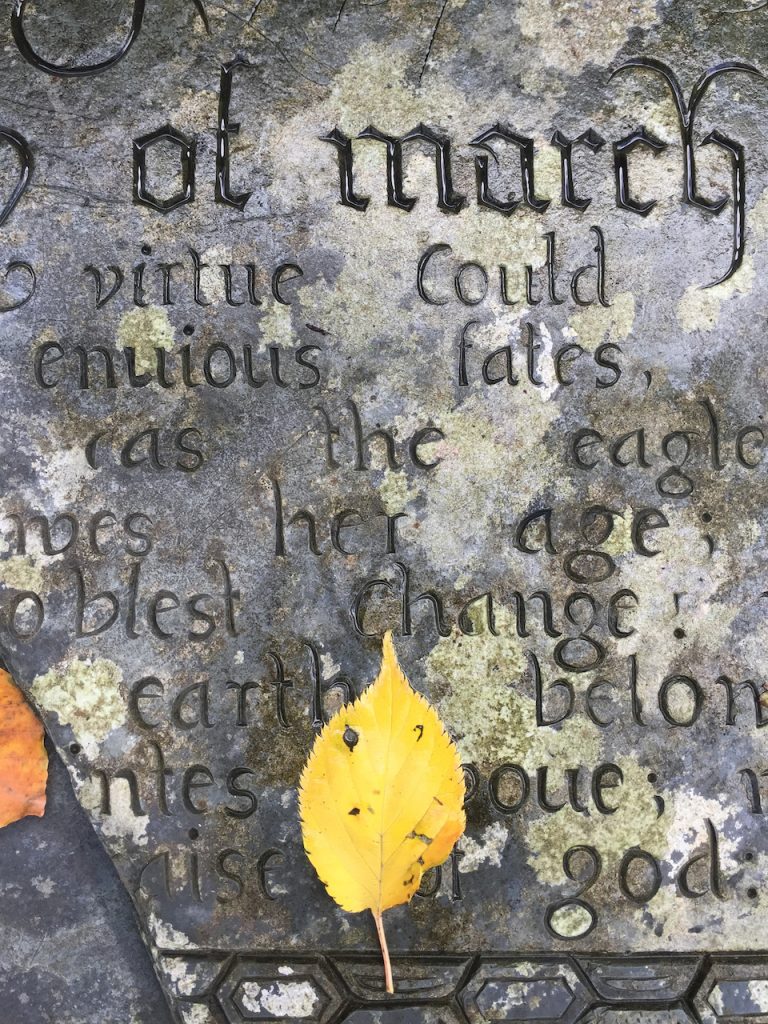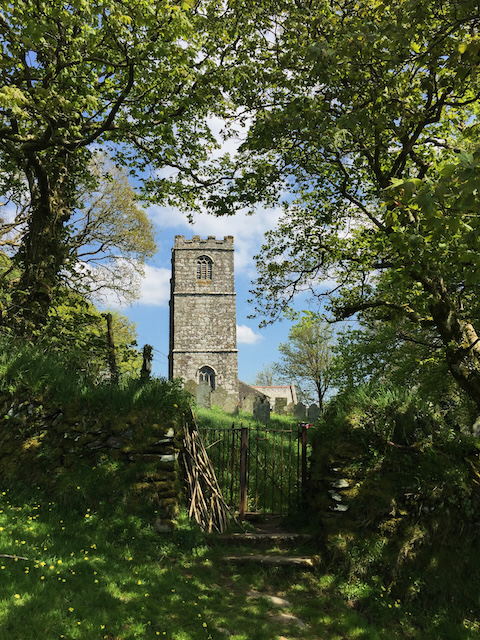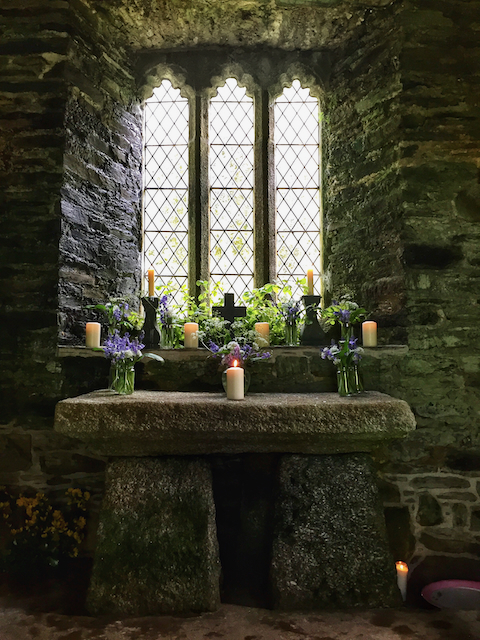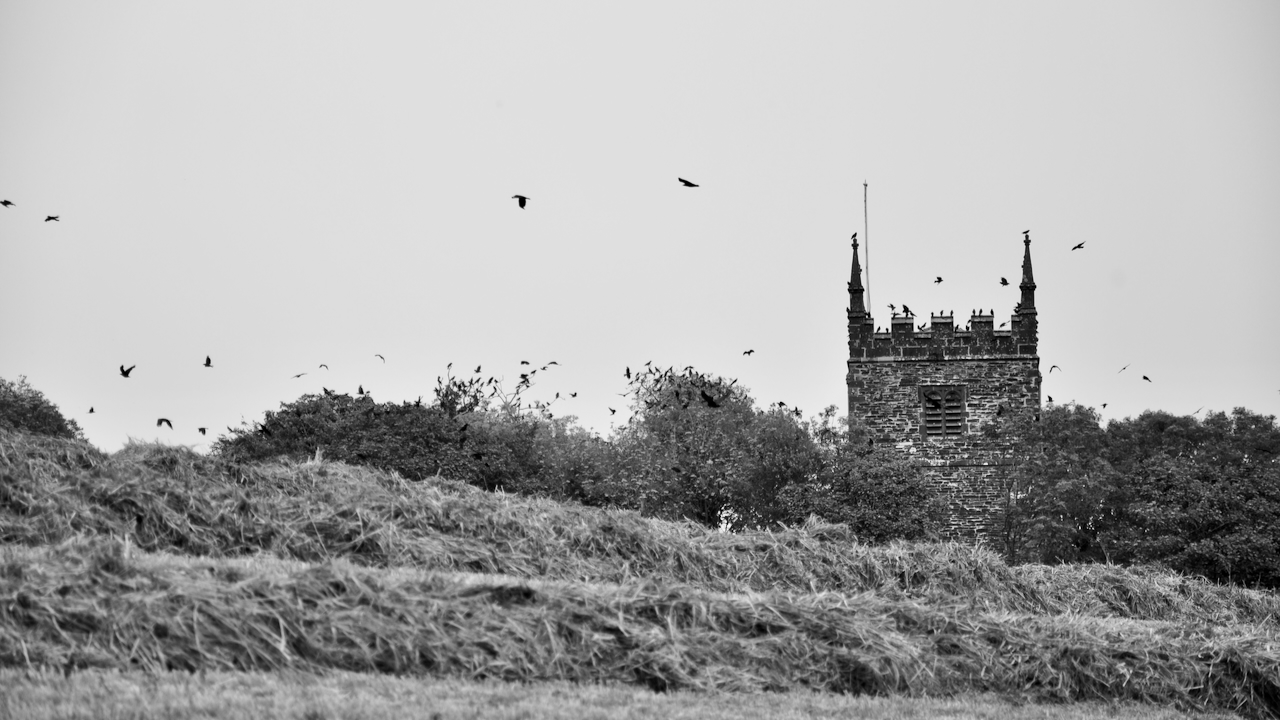I must admit, I never used to be the keenest of fans on the classics such as Thomas Hardy. Yet, after watching every conceivable adaptation of Far from the Madding Crowd, I gave the book a go. The impetus was also spurred on by the fact my Dad keeps sheep.
After this, I kept seeing Hardy everywhere.
First Love


During a favourable May, Mr Cox and I visited Boscastle in search of spring flowers in the Valency Valley.
We walked through the woodlands and explored the curious Minster Church, where the gravestone of the unjustly condemned witch knows as the “Fighting Fairy Woman of Bodmin Town” can be found. Her skeleton hung in the Museum of Witchcraft until it was taken down and given a proper burial outside the consecrated ground of the churchyard.
Beyond lies the parish of St Juliot and in 1870, Hardy visited as an architect to restore the church. It was here he met and fell in love with his first wife Emma Gifford.
The churchyard is also home to some very old Cornish crosses.
A broken heart


Mr Cox and I were stuck on what to do the following weekend. The sea mist had rolled in, covering Bude in a cold, cotton wool lump of mizzle.
We decided to venture out towards Bodmin Moor, to the small parish of St Clether. Named after one of the twenty-four children of St. Brychan, a 5th Century Welsh saint.
Here the sun shone and we took the winding, country lanes and came across a horse trap…
… for a moment, we were unsure if we’d travelled back in time but we had in fact stumbled upon a Thomas Hardy celebration in the parish. Specifically, for his poem, The Face in the Casement.
Before he married Emma, her sweetheart had been the curate’s son Willian Serjeant. She discovered William was dying from tuberculosis, so she decided to pay him one final visit.
This cosy house just by
I must call at for a minute,
A sick man lies within it
Who soon will die.
“He wished to marry me,
So I am bound, when I drive near him,
To inquire, if but to cheer him,
How he may be.
Hardy waited outside the vicarage in his horse trap while Emma went inside to tell William she loved Hardy. When the couple left, Hardy noticed William, gazing from the window and deliberately (but regrettably) put his arm around Emma in a gesture of triumph.
Then I deigned a deed of hell;
It was done before I knew it;
What devil made me do it
I cannot tell!
Yes, while he gazed above,
I put my arm about her
That he might see, nor doubt her
My plighted Love.
The pale face vanished quick,
As if blasted, from the casement,
And my shame and self-abasement
Began their prick.
The vicarage was recently up for sale and William Sejeant’s grave is in the churchyard opposite.
A short walk beyond the churchyard is the original church with a 6th century altar and holy well. The water ran through the church, and it’s believed one of the recesses held holy relics, which gave the water from the holy well supernatural powers.
A royal roam


On the day of the Royal Wedding, Mr Cox and I once again decided to venture out. This time, we stuck to the coast path.
My aim was to end up at the Boscastle Farm Shop, which does some very nice cakes and lunches.
Taking the coast path north at Hillsborough, we took a set of steep steps to Pentargon with it’s majestic waterfall and looming ahead is Beeny Cliff.
Hardy became estranged from his first wife, who died in 1912. In response, he returned to Cornwall to revisit the places linked with their courtship and wrote Poems of 1912-1913.
O the opal and the sapphire of that wandering western sea,
And the woman riding high above with bright hair flapping free –
The woman whom I loved so, and who loyally loved me.
Beeny Cliff begins with their courtship, forty years earlier and ends in the present day.
What if still in chasmal beauty looms that wild weird western shore,
The woman now is – elsewhere – whom the ambling pony bore,
And nor knows nor cares for Beeny, and will laugh there nevermore.
Hardy is alone and Emma is now permanently lost to him. Hardy uses the metaphor of the endless babble of the sea for time, which moves unmerciful forward without remorse for the people.
Although he married again, his heart was always with Emma. So much so, when he died in 1937, his ashes were interred in the Poets’ Corner of Westminster Abbey, but his heart was buried at Stinsford, Dorset, next to Emma.
To make the tale even more macabre, the man who removed Hardy’s heart left the room momentarily and returned to find the cat eating it. So, the cat was killed and also buried along with the slightly chewed remains of Hardy’s heart.
So, the moral is, you never realise what is on your doorstep until you look. And also, don’t leave anything lying around for a cat to find!
This is a Throwback Thursday blog post from my previous website Rainy Day Writing.
